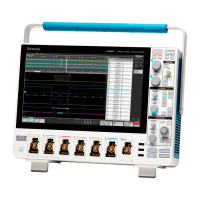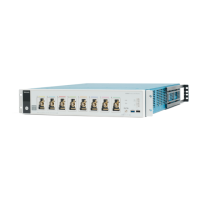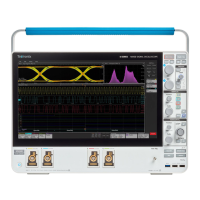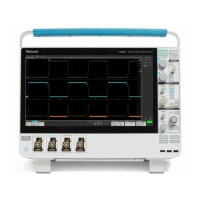• You should scale and position the source waveform so that it is contained on screen. (Off screen waveforms may be clipped, which will
result in errors in the integral waveform.)
•
You can use vertical position and vertical offset to position your source waveform. The vertical position and vertical offset will not affect
your integral waveform unless you position the source waveform off screen so that it is clipped.
DC offset
The source waveforms that you connect to the instrument often have a DC offset component. The instrument integrates this offset along
with the time-varying portions of your waveform. Even a few divisions of offset in the source waveform may be enough to ensure that the
integral waveform saturates (clips), especially with long record lengths.
FFT process
The FFT process mathematically converts the standard time-domain signal (repetitive or single-shot acquisition) into its frequency
components.
The FFT function processes the waveform record and displays the FFT frequency domain record, which contains the input signal
frequency components from DC (0 Hz) to ½ the sample (also called the Nyquist frequency ).
Nyquist frequency
The highest frequency that any digital oscilloscope can measure without errors is one-half of the sample rate. This frequency is called the
Nyquist frequency
.
The FFT waveform displays the input signal frequency components from DC (0 Hz) to the Nyquist frequency.
FFT and aliasing
Aliasing occurs when the input frequency of a signal is greater than one half of the sampling frequency (the sample rate).
Set the sample rate high enough so that the signals in the spectrum appear at their correct frequency as opposed to a lower aliased
frequency value. Also, complex signal shapes that have many harmonics in them, such as a triangle or square wave, can appear to be OK
in the time domain when in fact many of the harmonics in that signal are aliased.
One way to check for aliasing is to increase the sample rate and observe whether any of the harmonics unwrap to different frequency
locations.
Measurement concepts
250
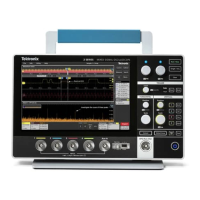
